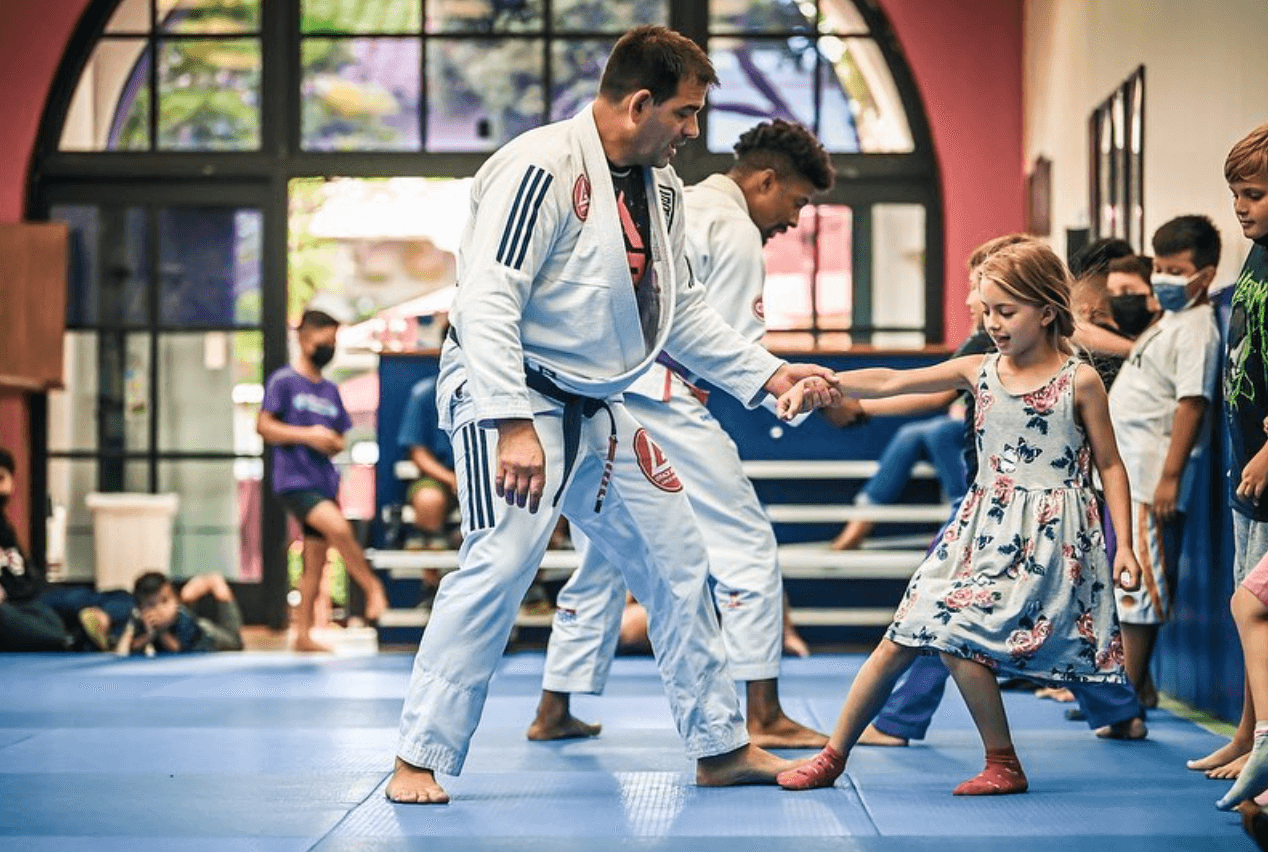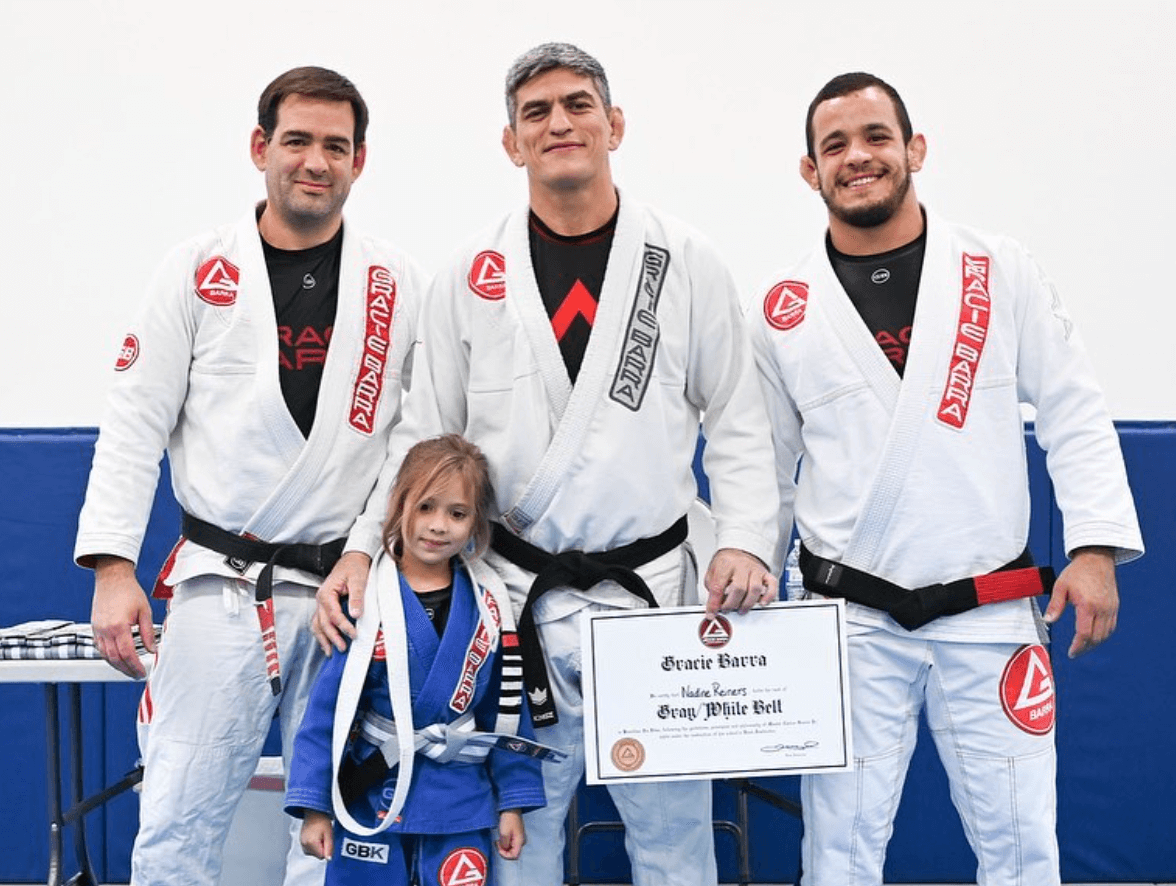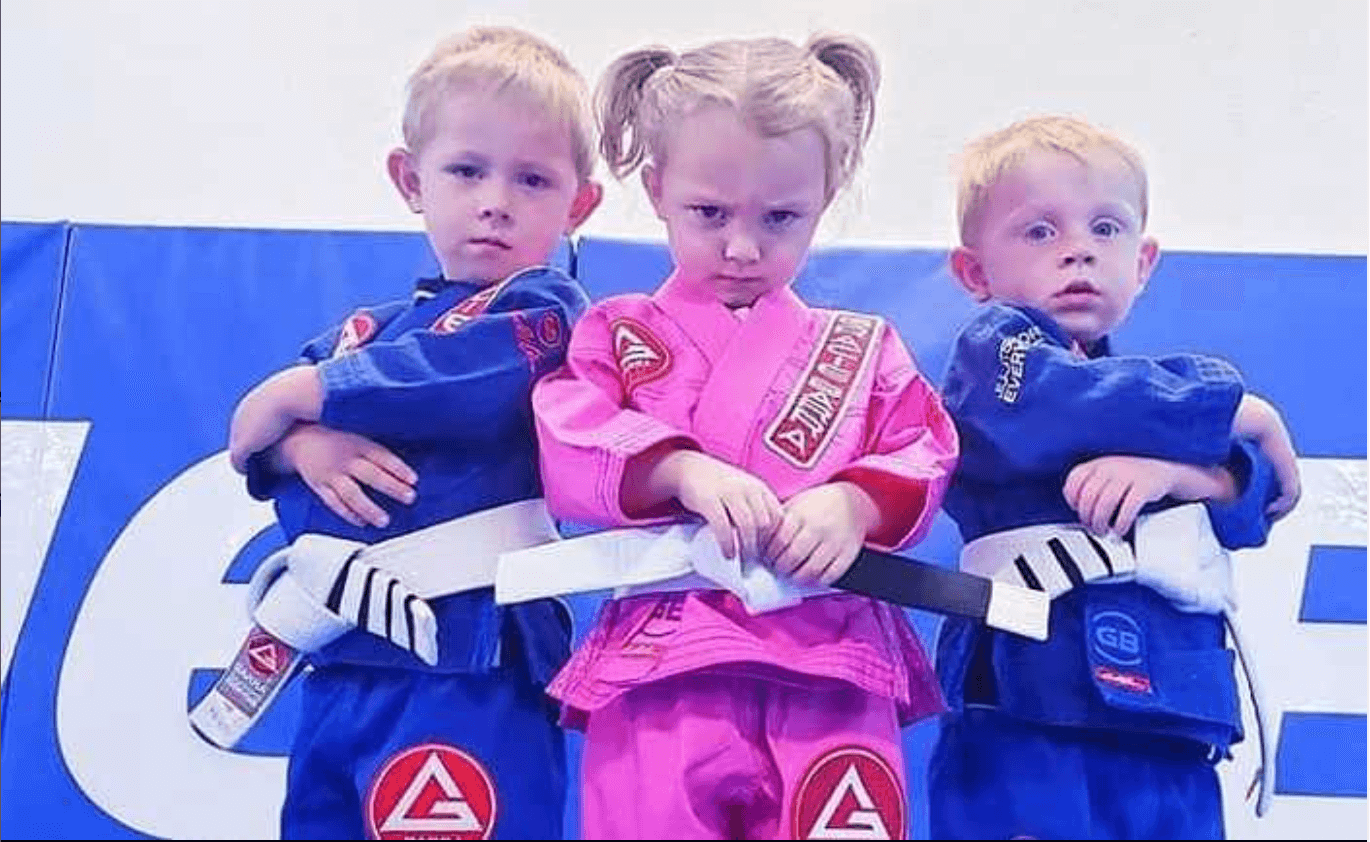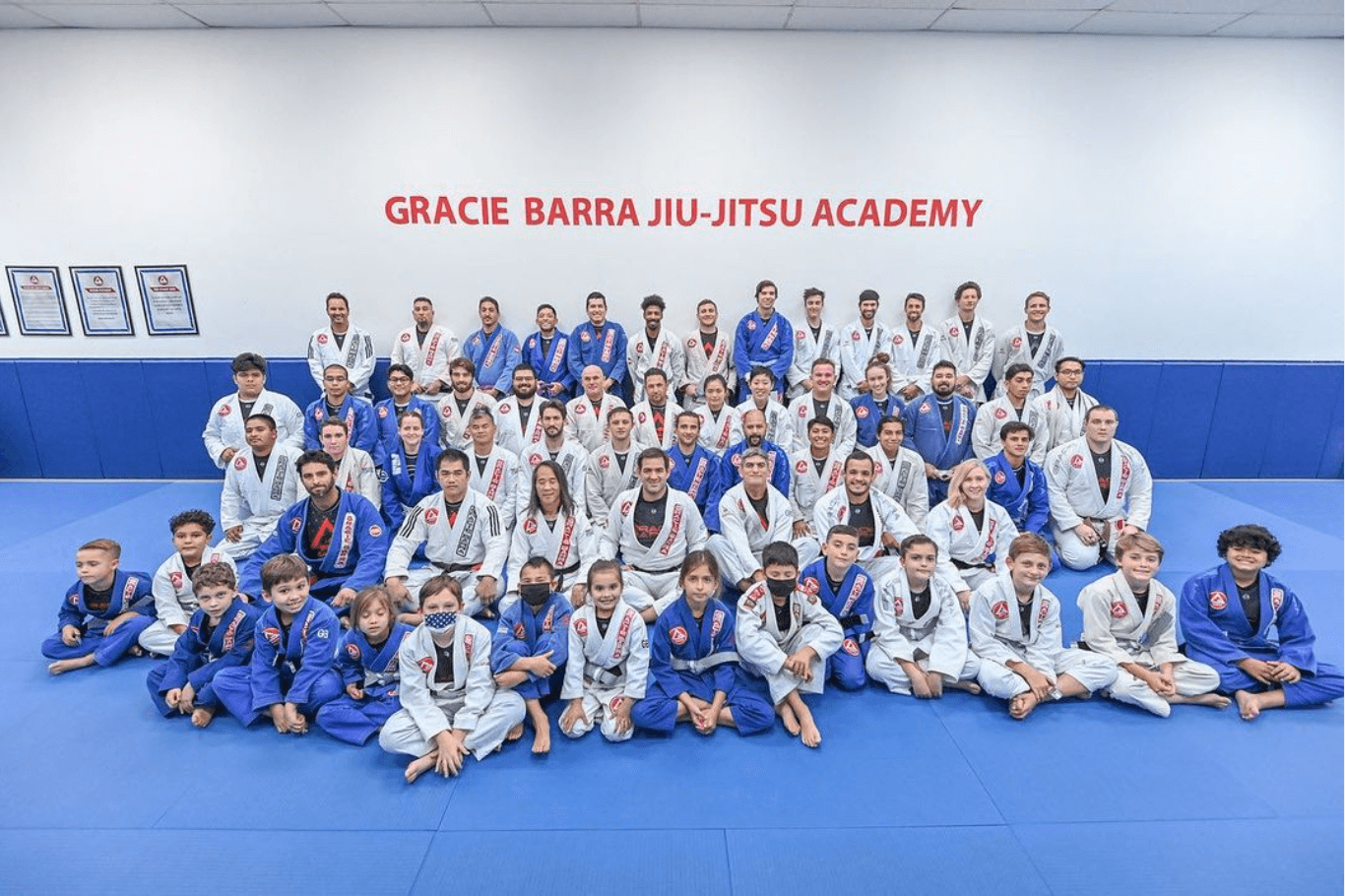Empowering Youth: How Jiu-Jitsu Shapes Character and Expands The Lessons Of Home
Mar 27
When looking at teaching Jiu-Jitsu to kids, we must consider how Gracie Barra's instructors impact a child’s life. In this blog, we will explore the transformative power of Jiu-Jitsu in shaping the character of young individuals. By delving into the lessons of humility, discipline, and perseverance that Jiu-Jitsu teaches, we will uncover how this martial art expands beyond the physical realm and equips youth with valuable life skills.
Professor Rodrigo Clark, a 4th-degree black belt of Gracie Barra Santa Barbara, takes great satisfaction in teaching the GB Kids classes at his school. Professor Rodrigo grew up in Rio de Janeiro, Brazil, and started training around the age of 15 Jiu-Jitsu at one of the early schools in 1993 associated with the original Gracie Barra school.
Professor Rodrigo discusses not only how Jiu-Jitsu helps children deal with bullying in the schoolyard but also how it can steer bullies away from bullying, the role of Jiu-Jitsu kids classes in reinforcing moral lessons taught at home, and a touching Jiu-Jitsu success story.
Bullying and Jiu-Jitsu
Professor Rodrigo has a different take on Jiu-Jitsu as it applies to bullying. Of course, Jiu-Jitsu is the ideal way to equip a young person to develop self-confidence and practical self-defense techniques to deal with bullying. But Professor Rodrigo looks at it from an alternate perspective. Preventing young people from becoming bullies themselves.
"I think it's more about teaching kids how not to be bullies than teaching kids how to protect themselves against bullies. The self-defense training itself is not so complex. They can learn some basic self-defense within a few months," explains Professor Rodrigo, "But over time, they learn to be more confident, and they learn how to respect other people. They learn how to respect other people how they are."
Professor Rodrigo recounts observing some children come into the school and act as though they wanted to bully another child because the other looked different - in terms of color, height, or physique. But once the kid works together with the new child by showing them the lesson that is being taught in class, the potential bully learns to behave differently with the others.
"I think it's more about teaching kids how not to be bullies than teaching kids how to protect themselves against bullies. The self-defense training itself is not so complex. They can learn some basic self-defense within a few months," explains Professor Rodrigo, "But over time, they learn to be more confident, and they learn how to respect other people. They learn how to respect other people how they are."
Professor Rodrigo recounts observing some children come into the school and act as though they wanted to bully another child because the other looked different - in terms of color, height, or physique. But once the kid works together with the new child by showing them the lesson that is being taught in class, the potential bully learns to behave differently with the others.
"It's a very important lesson. It can be a tough lesson that the bully, that the kid that initiates that process learns," grins Professor Rodrigo.The child may say to themselves, "I had better relax here. I had better respect this person because I thought he was different - but I'm different here. I can't stop him from doing what he is trying to do."

Cultivating Discipline in Active Children
When many of us think about a young person who is put into Jiu-Jitsu by their parents, we may commonly think of a shy boy or girl who lacks confidence and is looking to Jiu-Jitsu as a way to strengthen the young person both mentally and physically. However, there are different types of children who benefit from training in Jiu-Jitsu. For example, consider a very active, aggressive child with boundless energy. Some of the parents reading this article will nod their heads in recognition.
Professor Rodrigo has seen how Jiu-Jitsu can be a positive, useful way for the high-energy child to channel their energy. He also sees how children need limits and boundaries and a way to learn discipline in a culture where the corporal punishment approach of past generations is roundly discouraged.
"We need communication. Kids still need lessons. Kids need something to prove that they can not do everything that they want," Professor Rodrigo shares. "Something that will stick in their mind. We don't need to hurt them or be aggressive. We don't need to scream at them all of the time."
"Basically, kids are learning everything that we do. They replicate everything that we do." If the parent deals with the misbehavior of a child by shouting and getting emotional, Professor Rodrigo believes that the child will learn to deal with situations in their own lives in a similar, aggressive, emotionally volatile manner.
"But that doesn't mean that they don't still need to be taught a lesson," says Professor Rodrigo, "When they go to Jiu-Jitsu, and they are put through the regimen of training - the warmup, the drills, the technique, and of course, the sparring, they learn about resilience. They learn about how to be tough and how to prevail. How to survive under pressure and difficult circumstances. And I think THAT is what Jiu-Jitsu provides that is very unique."
Professor Rodrigo sees the close contact and hands-on nature of Jiu-Jitsu as fundamentally different from some of the other striking-based martial arts.
Professor Rodrigo has seen how Jiu-Jitsu can be a positive, useful way for the high-energy child to channel their energy. He also sees how children need limits and boundaries and a way to learn discipline in a culture where the corporal punishment approach of past generations is roundly discouraged.
"We need communication. Kids still need lessons. Kids need something to prove that they can not do everything that they want," Professor Rodrigo shares. "Something that will stick in their mind. We don't need to hurt them or be aggressive. We don't need to scream at them all of the time."
"Basically, kids are learning everything that we do. They replicate everything that we do." If the parent deals with the misbehavior of a child by shouting and getting emotional, Professor Rodrigo believes that the child will learn to deal with situations in their own lives in a similar, aggressive, emotionally volatile manner.
"But that doesn't mean that they don't still need to be taught a lesson," says Professor Rodrigo, "When they go to Jiu-Jitsu, and they are put through the regimen of training - the warmup, the drills, the technique, and of course, the sparring, they learn about resilience. They learn about how to be tough and how to prevail. How to survive under pressure and difficult circumstances. And I think THAT is what Jiu-Jitsu provides that is very unique."
Professor Rodrigo sees the close contact and hands-on nature of Jiu-Jitsu as fundamentally different from some of the other striking-based martial arts.
"If you go to a karate school or a Tae Kwon Do school, they have a great philosophy. But the kids are not really under stress. And kids are humans just like adults. They need to experience stress in order to know how to get away from those situations," says Professor Rodrigo, "You have to put them in that maze and tell them - now you get out! You are on your own! I can't hold your hand forever.

Teaching discipline in Jiu-Jitsu class and at home
As a parent, Professor Rodrigo acknowledges that parents can have a challenging time teaching discipline. They may be apprehensive about how they are going to communicate with their son or daughter in a way that feeds their growth rather and breaks down their confidence. They may not be sure how far they can go in pushing their child through uncomfortable situations.
"So when the child is put in that environment in a Jiu-Jitsu class, they are taught about their limits. They have someone telling them - hey, don't give up! Reinforcing them in a positive way to how and why they should be good. How they can be better."
"And not in a negative way. 'Oh, you are weak! You should do better! You are soft.'," says Professor Rodrigo, "That's the wrong way." He thinks that maybe the hard approach - the "old way" - was the prevailing philosophy in past generations, but nowadays, the negative reinforcement approach can be counterproductive and discourage a child.
"So when the child is put in that environment in a Jiu-Jitsu class, they are taught about their limits. They have someone telling them - hey, don't give up! Reinforcing them in a positive way to how and why they should be good. How they can be better."
"And not in a negative way. 'Oh, you are weak! You should do better! You are soft.'," says Professor Rodrigo, "That's the wrong way." He thinks that maybe the hard approach - the "old way" - was the prevailing philosophy in past generations, but nowadays, the negative reinforcement approach can be counterproductive and discourage a child.
"When I see a kid losing control or losing their motivation during training, I come to them and say, 'I know that you can do it. I know what you are capable of. All you have to do is a little hip escape, create the shield, and breathe. I trust that you can do this. You are going to make it!' And eventually, they do it, and they look at the instructor and go like, 'Wow! That was so powerful!" grins Professor Rodrigo.

Expand the lessons of home
Professor Rodrigo looks at his role as a GB Kids instructor as expanding and reinforcing the life lessons that his young students learn at home.
"There are different reasons why parents bring their children to Jiu-Jitsu. It's not only self-defense or a way for them to kill some time. Those people come in (to the GB school), but they aren't going to stick for very long," shares Professor Rodrigo, "We try to explain that we are not just there to entertain them."
"We are there to further extend the lessons that they receive at home. That's our main goal. We need to be on the same page in that we both want the same for their child."
Professor Rodrigo provides a specific example, "It's very easy to talk about respect. Easy to talk about discipline. Very easy to tell our kids that they have to respect someone. But it's very difficult to tell them why and explain what's behind everything."
When the kids come into the GB school and begin to connect with Jiu-Jitsu, concepts such as discipline are explained and illustrated to help them to be able to relate. To demonstrate what discipline means, "it's not just a word."
"If you want to go somewhere. If you want to be someone. If you want to get your place in the world, you need discipline," Professor Rodrigo explains, "You need to build a routine. You need to be here so you can continue to develop your technique. To continue to learn and improve. Every day, little by little."
Setting goals is important. However, saying something like "I want to be a World Champion one day," Professor Rodrigo thinks is too far for a young person. "It's almost unattainable when you consider it from a child's point of view. We need to celebrate our small victories."
Professor Rodrigo then applies the lessons learned on the mat to the everyday experiences of the young person's life. If the child is having difficulty concentrating in school, the child wonders why they can't learn the material in the same way as the other classmates. What is the cause of the lack of concentration?
Professor Rodrigo says the child may have thoughts such as "Maybe I need to relax. To have more peace of mind. Maybe there is something happening to me at home that is hurting me inside. Maybe something that another child has said to me is stuck inside of my head. The words keep turning over in my brain. I can't concentrate on anything else."
Professor Rodrigo believes that once children have built some self-confidence through Jiu-Jitsu, they will find it easier to relax mentally and follow through on their tasks, and not be bogged down with little annoyances in life.
Returning to the subject of discipline, Professor Rodrigo often reminds the young students, "You might be excited today, but tomorrow, when you come in, you might be tired. Discipline is knowing that once you are here, you have to give your best. You have to give 100%!"
Young people are also susceptible to feeling reluctant or uninspired at times in Jiu-Jitsu class. Professor Rodrigo recommends appealing to the young person’s sense of pride to do their best.
"There are different reasons why parents bring their children to Jiu-Jitsu. It's not only self-defense or a way for them to kill some time. Those people come in (to the GB school), but they aren't going to stick for very long," shares Professor Rodrigo, "We try to explain that we are not just there to entertain them."
"We are there to further extend the lessons that they receive at home. That's our main goal. We need to be on the same page in that we both want the same for their child."
Professor Rodrigo provides a specific example, "It's very easy to talk about respect. Easy to talk about discipline. Very easy to tell our kids that they have to respect someone. But it's very difficult to tell them why and explain what's behind everything."
When the kids come into the GB school and begin to connect with Jiu-Jitsu, concepts such as discipline are explained and illustrated to help them to be able to relate. To demonstrate what discipline means, "it's not just a word."
"If you want to go somewhere. If you want to be someone. If you want to get your place in the world, you need discipline," Professor Rodrigo explains, "You need to build a routine. You need to be here so you can continue to develop your technique. To continue to learn and improve. Every day, little by little."
Setting goals is important. However, saying something like "I want to be a World Champion one day," Professor Rodrigo thinks is too far for a young person. "It's almost unattainable when you consider it from a child's point of view. We need to celebrate our small victories."
Professor Rodrigo then applies the lessons learned on the mat to the everyday experiences of the young person's life. If the child is having difficulty concentrating in school, the child wonders why they can't learn the material in the same way as the other classmates. What is the cause of the lack of concentration?
Professor Rodrigo says the child may have thoughts such as "Maybe I need to relax. To have more peace of mind. Maybe there is something happening to me at home that is hurting me inside. Maybe something that another child has said to me is stuck inside of my head. The words keep turning over in my brain. I can't concentrate on anything else."
Professor Rodrigo believes that once children have built some self-confidence through Jiu-Jitsu, they will find it easier to relax mentally and follow through on their tasks, and not be bogged down with little annoyances in life.
Returning to the subject of discipline, Professor Rodrigo often reminds the young students, "You might be excited today, but tomorrow, when you come in, you might be tired. Discipline is knowing that once you are here, you have to give your best. You have to give 100%!"
Young people are also susceptible to feeling reluctant or uninspired at times in Jiu-Jitsu class. Professor Rodrigo recommends appealing to the young person’s sense of pride to do their best.
"If you are here and you are not dedicating yourself, and you are not paying attention and not doing your best, you are wasting your time," says Professor Rodrigo. He will say gently to the student, "Your family brought you all of the way here today. You might as well be dedicated to your training."
The message that the instructor wants to impart to the young person is the importance of building your routine, understanding that success largely depends on your routine - which is about repeating the same things over and over again to achieve a certain result.
GB Student Success Story
Professor Rodrigo shared the moving story of two young students who came to GB Santa Barbara and had been in the foster care system. The two young students (ages approximately 8 and 9 years of age) were introduced to Professor Rodrigo by their foster mother. The children had come from an unfortunate, abusive background.
"They went from foster home to foster home until someone decided to take care of them. That lady found out about us and brought the kids to Jiu-Jitsu."
Professor Rodrigo remembers the children initially being extremely shy and afraid to interact with the instructors and other students. "They couldn't have eye contact, and they couldn't shake people's hands. They couldn't communicate whatsoever. It was very challenging from the get-go."
It was a challenge for Professor Rodrigo and the other GB Santa Barbara instructors to deal with the young people. Professor Rodrigo recalls telling himself, "That's why I'm here." He also encouraged the staff who were apprehensive about how best to handle these vulnerable kids.
One of the assistant instructors expressed their doubts about their ability to help the kids, "I don't know if I can handle this. The kids don't pay attention, and they don't want to be here; when I talk to the kids, they say that they want to go home."
Professor Rodrigo remained resolute that he could do something to help the kids through Jiu-Jitsu. He understood and embraced the challenge. He said to himself, "No, I'm going to keep these kids here, and they are going to train. As long as they are here, they will be much better off than if they were in a different place. And I think we can improve their lives much more than just teaching them an armbar."
"They went from foster home to foster home until someone decided to take care of them. That lady found out about us and brought the kids to Jiu-Jitsu."
Professor Rodrigo remembers the children initially being extremely shy and afraid to interact with the instructors and other students. "They couldn't have eye contact, and they couldn't shake people's hands. They couldn't communicate whatsoever. It was very challenging from the get-go."
It was a challenge for Professor Rodrigo and the other GB Santa Barbara instructors to deal with the young people. Professor Rodrigo recalls telling himself, "That's why I'm here." He also encouraged the staff who were apprehensive about how best to handle these vulnerable kids.
One of the assistant instructors expressed their doubts about their ability to help the kids, "I don't know if I can handle this. The kids don't pay attention, and they don't want to be here; when I talk to the kids, they say that they want to go home."
Professor Rodrigo remained resolute that he could do something to help the kids through Jiu-Jitsu. He understood and embraced the challenge. He said to himself, "No, I'm going to keep these kids here, and they are going to train. As long as they are here, they will be much better off than if they were in a different place. And I think we can improve their lives much more than just teaching them an armbar."
"They are now some of the most excited kids in the class. They are among the happiest of the kids. They come every single day. They both just got (promoted to) their new gray belts," Professor Rodrigo smiles."You can see the transformation. When I speak with their mom, it's an emotional thing. Especially for her. She comes to tears when she talks about how the kids were before and after Jiu-Jitsu."

Shaping Futures Through Jiu-Jitsu
After years of being focused on competition and high performance, Professor Rodrigo became more focused on teaching kids Jiu-Jitsu. During all of those classes and faces, he has interacted with hundreds of students and, in turn, been affected by the young people and watched them battle obstacles and improve themselves."For a child, having that type of influence, that type of positive impact on their lives will change the next fifty years of their lives. Who they are and how they relate to people, how they treat other people, and how successful that they are going to become," says Professor Rodrigo.
Professor Rodrigo sees the responsibility of all GB Jiu-Jitsu kids instructors to recognize the important role that they play in each child’s future.
"If we share some love and care and try to point out the right direction, and have some reinforcement from other people... because Jiu-Jitsu is all about the collective. The collective aspect. It's not purely one on one. It's about a group of kids all under the same influence, and they are sharing their stories. Impacting the child in a way that the kids will end up flourishing and becoming a much better version of themselves."
"If we share some love and care and try to point out the right direction, and have some reinforcement from other people... because Jiu-Jitsu is all about the collective. The collective aspect. It's not purely one on one. It's about a group of kids all under the same influence, and they are sharing their stories. Impacting the child in a way that the kids will end up flourishing and becoming a much better version of themselves."
Blog written by Mark Mullen, a Gracie Barra Black Belt
Who we are
We prepare GB instructors, school owners & students with certifications, courses & tools to lead, grow & transform lives through Jiu-Jitsu.
Connect with us
-
Instagram
-
Facebook
-
institute@graciebarra.com
Copyright © 2026
